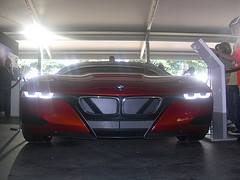Enzo Ferrari was expert at using the cachet gained by his racing machines to sell cars meant for the street.  But long before Signore Ferrari started his racing career, two brothers from Lippe, Germany, were doing the same thing.
But long before Signore Ferrari started his racing career, two brothers from Lippe, Germany, were doing the same thing.
It all began with bicycles
Frederic Duesenberg was born in Lippe in 1878, and his brother August arrived the year after. It wasn’t long before their family embarked on the journey of their lives — emigrating to America. Soon they settled in the Midwest, and that’s where Augie and Fred got into racing. Though, not motor racing, bicycle racing. The two brothers weren’t just good at riding bicycles either; they also assembled them, and Duesenberg-built bicycles became sought-after on the famous American bike racing circuit.
Fred confirmed the quality of their machines in 1898 by establishing a world record for Read more . . .
 And that is precisely the gap Pierre Boulanger wanted to bridge with the improvement of the
And that is precisely the gap Pierre Boulanger wanted to bridge with the improvement of the  There was a time when Jaguars were driven by courageous young men who took them to the very edge of their very high limits. And there was a time when Jaguar was a force to be imagined in the most grueling road racing of all, the 24 Hours of Le Mans.
There was a time when Jaguars were driven by courageous young men who took them to the very edge of their very high limits. And there was a time when Jaguar was a force to be imagined in the most grueling road racing of all, the 24 Hours of Le Mans.
